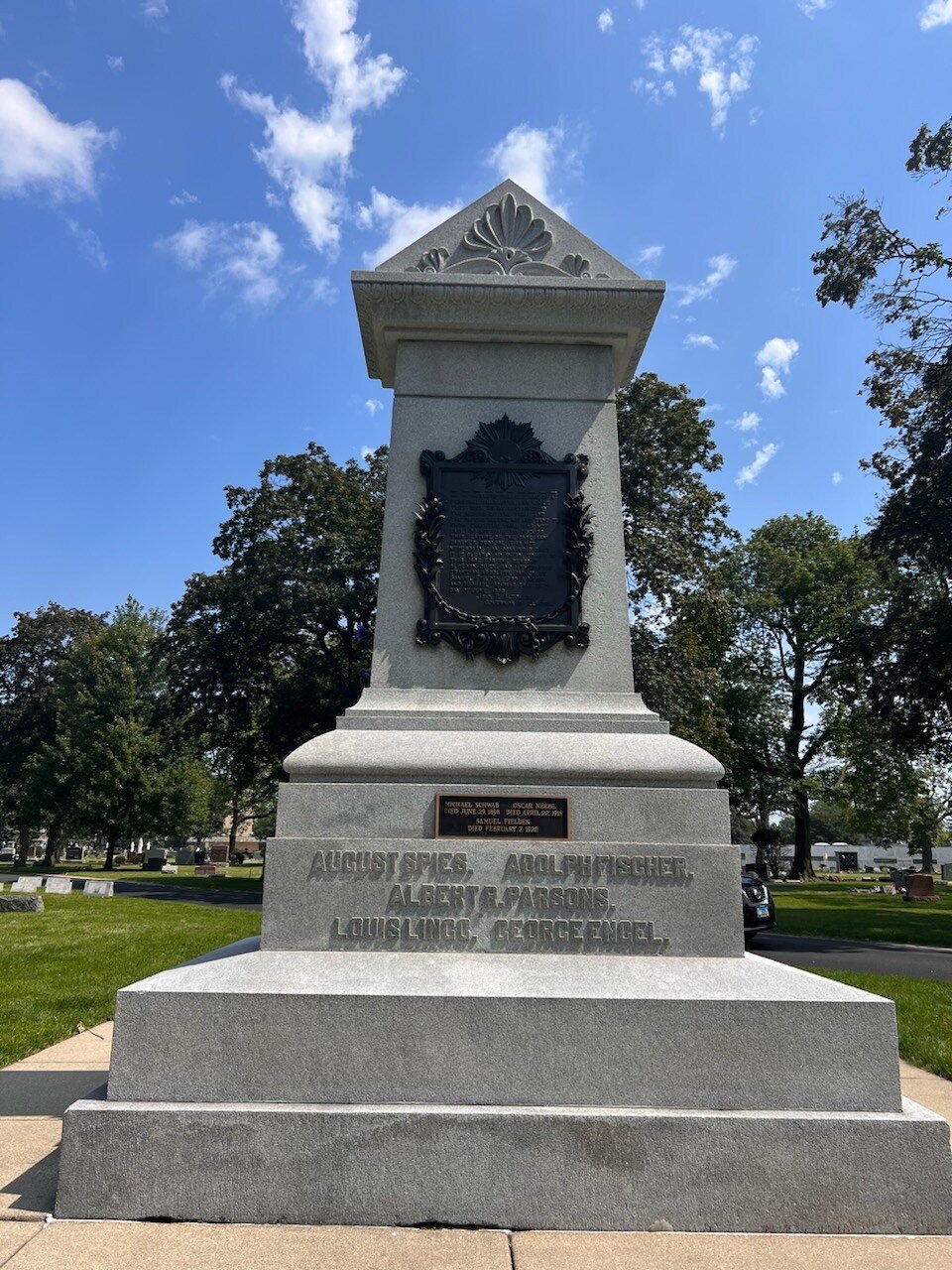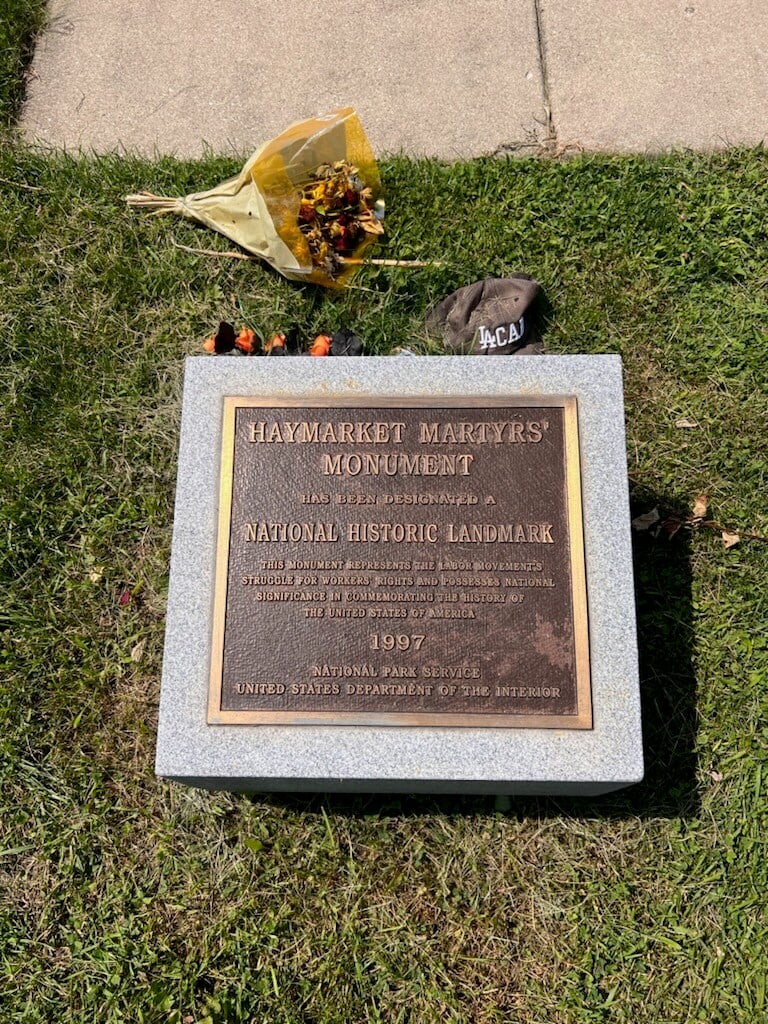The Haymarket Riots - A Defining Moment in Chicago's History



The Haymarket Riots weren’t just another protest—they were a flashpoint in the fight for workers’ rights that would change the course of American history. Picture this: Chicago, 1886, a city teeming with tough factory workers demanding an eight-hour workday. Tensions were high, and the atmosphere was electric with hope for change. But what started as a peaceful rally in Haymarket Square quickly spiraled into chaos when a dynamite bomb exploded, igniting a confrontation that left the city and the nation reeling.
This wasn’t just about one protest—it was about a movement that would leave an indelible mark on Chicago’s identity and labor rights worldwide. In this blog, we’ll dive into the events of that fateful day, explore its significance to Chicago, and discuss the enduring legacy of the Haymarket Monument, a powerful symbol that still resonates today.
The Labor Movement in Chicago
By the late 19th century, Chicago had become the beating heart of America’s industrial engine, with factories like the McCormick Reaper Works and railroads fueling the city’s rapid expansion. This growth, however, came at a steep cost for the laborers who kept the machines running. Workers often endured ten- to sixteen-hour days in dangerous, overcrowded conditions where injury and exhaustion were common. There were no safety regulations to protect them nor fair wages to compensate for their grueling labor. For these workers, survival meant sacrificing nearly every waking hour to the relentless grind of the industrial machine. Amidst these harsh conditions, the demand for an eight-hour workday began to surface across the city.
What seems like a basic right today was a radical idea back then, representing a significant shift in how work was perceived. The concept was simple yet revolutionary: eight hours for work, eight hours for rest, and eight hours for personal time. This was more than just a plea for shorter hours; it was a demand for dignity, the ability to have a life beyond the factory walls. Labor unions and activists, including prominent figures like August Spies, Albert Parsons, and Samuel Fielden, quickly became the vanguard of this movement, organizing strikes, protests, and rallies to push for change. The city's booming industrial sector made it a perfect stage for this struggle, drawing national attention to the plight of the working class.
The movement gained significant traction in Chicago, where unions like the American Federation of Labor (AFL) and the Knights of Labor led the charge. These organizations were not just fighting for shorter workdays; they were challenging the very system that exploited laborers for profit. The call for an eight-hour workday became a unifying force, bringing together workers from different industries and backgrounds.
On May 1, 1886, tens of thousands of workers across the nation took to the streets in what became known as the first May Day, a show of solidarity and strength in the fight for fair labor practices. Chicago was the epicenter of this movement, its streets echoing with the chants of workers demanding justice. However, the struggle for the eight-hour workday was far from over. The protests were met with resistance from factory owners like McCormick and law enforcement, who viewed the movement as a threat to order.
On May 3, a person was killed and several others were injured when police stepped in to protect fighting strikebreakers and strikers outside McCormick Reaper Works. This growing tension between workers and the establishment set the stage for the Haymarket Riots, where the fight for labor rights would take a dramatic and violent turn. The events that unfolded in Haymarket Square would forever alter the course of labor history, making Chicago a symbol of both the progress and the peril of the industrial age.
The Haymarket Riots: May 4, 1886
The events of May 4, 1886, in Haymarket Square began as a peaceful gathering. Workers and activists assembled to rally for an eight-hour workday, continuing the momentum from May Day, while protesting the violence from the previous day. Chicago Mayor Carter Harrison deemed the atmosphere calm, even as speakers like August Spies and Albert Parsons took the stage to address the crowd. As dusk fell, a sense of solidarity filled the square, with workers hopeful that their demands for better labor conditions were finally being heard.
However, the tranquility was shattered when an unidentified assailant threw a dynamite bomb into the midst of the Chicago police who were dispersing the crowd. The explosion triggered a wave of panic and chaos, as gunfire erupted in the square. The exact details of what happened next remain murky, but when the smoke cleared, several police officers, including patrolman Mathias J. Degan, and civilians lay dead or injured. The violence marked a turning point in the labor movement, transforming a peaceful protest into a tragic moment in American history.
The aftermath of the Haymarket Riots was marked by a controversial and heavily politicized legal response. Eight labor organizers, including Spies, Parsons, Adolph Fischer, George Engel, and Louis Lingg, were arrested and charged with conspiracy, despite no evidence linking them to the bombing. Their trials were widely criticized as unfair, with the defendants being convicted more on their political beliefs than on actual evidence. Illinois Governor John Peter Altgeld, who later pardoned three defendants, called the trial a "miscarriage of justice." Four of the men, however, were eventually hanged, becoming known as the Haymarket Martyrs. Louis Lingg, facing execution, committed suicide in his cell. Their executions ignited outrage and solidified their place as symbols of the fight for workers' rights, leaving a legacy that would inspire future generations of labor activists.
The Impact of the Haymarket Riots on Chicago and Beyond
The Haymarket Riots had a transformative impact on the labor movement, both in the United States and globally. The intense violence and subsequent, highly controversial trial of the accused labor organizers brought significant attention to the struggles of workers everywhere. The Haymarket Martyrs, as they became known, were exalted as symbols of resistance and the fight for workers’ rights. Their story resonated deeply with labor movements around the globe, galvanizing efforts to secure better working conditions and fair treatment for workers across industries.
One of the most enduring legacies of the Haymarket Riots is the establishment of May 1st as International Workers’ Day, also known as May Day. The riots in Chicago and the tragic fate of the Haymarket Martyrs became a powerful rallying cry for workers' rights, leading to this day’s global recognition as a time to honor the sacrifices made by labor activists and to continue the fight for fair labor practices. In Chicago the impact of the riots went beyond just shaping labor laws; it cemented the city's identity as a central hub for labor activism. This legacy of resilience and advocacy continues to inspire movements today, keeping the spirit of the Haymarket Riots alive in ongoing struggles for justice and equality in the workplace.
The Haymarket Martyrs' Monument: A Symbol of Struggle and Sacrifice
The Haymarket Martyrs' Monument, located in Forest Home Cemetery, is a powerful symbol commemorating the lives lost and the struggles endured during the Haymarket Affair. Unveiled in 1893, this 16-foot-high granite monument features a striking figure of Lady Justice placing a wreath on the head of a fallen worker, capturing the essence of the fight for labor rights. The monument was erected to honor the eight labor leaders, including Spies, Parsons, Fischer, Engel, and Lingg, who were unjustly tried and, in most cases, executed following the Haymarket Riots.
The monument's design is rich with symbolism, with Lady Justice representing the labor movement’s ongoing quest for fairness and equality. Inscriptions on the monument reflect the values and sacrifices made by the workers, emphasizing the importance of the event in American labor history. Over the years, the monument has suffered wear and tear, but dedicated efforts have been made to restore and preserve this important piece of history, ensuring it continues to stand as a testament to the labor movement.
Today, the Haymarket Martyrs' Monument is more than just a memorial; it is a site for reflection and education. Visitors from around the world come to pay their respects and learn about the significance of the Haymarket Riots in shaping labor laws and workers' rights. The monument stands as a reminder of the sacrifices made in the pursuit of justice and the ongoing importance of these values in today’s society.
Additional Facts and FAQs About the Haymarket Riots
Q: Who were the Chicago anarchists involved in the Haymarket Riots?
A: The Chicago anarchists included prominent figures like August Spies, Michael Schwab, Samuel Fielden, and Oscar Neebe, who were central to the labor movement in Chicago.
Q: What was Carter Harrison’s role in the events surrounding the Haymarket Riots?
A: Carter Harrison, the Mayor of Chicago at the time, played a crucial role by trying to mediate between the strikers and the police to avoid further violence. Before the explosion, he had judged the gathering at Haymarket Square to be peaceful.
Q: Where did the Haymarket Bombing take place?
A: The Haymarket Bombing occurred on Desplaines Street in Chicago during a labor rally advocating for an eight-hour workday and protesting the police brutality that occurred the previous day outside McCormick Reaper Works.
Q: How did the Chicago Tribune cover the Haymarket Riots?
A: The Chicago Tribune extensively covered the Haymarket Riots, often framing the event and the subsequent trial in a way that was sympathetic to the authorities and critical of the labor movement.
Q: How did Congress react to the events of the Haymarket Riots?
A: While Congress did not take direct legislative action in response to the Haymarket Riots, the event did influence discussions on labor laws and workers' rights nationwide.
Q: How did the events of the Haymarket Riots impact Europe?
A: The Haymarket Riots significantly impacted Europe, inspiring labor movements and the observance of May 1st as International Workers’ Day, a tradition that continues in many European countries.
Q: Who was Governor Oglesby, and what was his connection to the Haymarket Martyrs?
A: Governor Richard J. Oglesby was the Illinois governor at the time, and although he did not pardon the Haymarket Martyrs, his successor, John Peter Altgeld, did in 1893.
Q: Is there a connection between Labor Day and the Haymarket Riots?
A: Each September the U.S. observes Labor Day to celebrate national progress for labor rights. Similarly, the Haymarket Riots are directly connected to the global observance of May 1st as International Workers' Day, highlighting labor struggles worldwide.
Q: What were the police accused of during the Haymarket Riots?
A: Allegations of police brutality were central to the narrative of the Haymarket Riots, particularly in their aggressive response to strikers on May 3rd and the violence that transpired the following day at Haymarket Square.
Q: Who was Inspector Bonfield?
A: Inspector John Bonfield was a key figure in the Chicago Police Department, notorious for his harsh tactics against labor strikes. He played a significant role in the events leading to the Haymarket Riots.
Q: What was the significance of Michigan Avenue for the labor movement?
A: Michigan Avenue was one of the major streets where labor protests took place, including those leading up to the Haymarket Riots. Michigan Street has come to symbolize the heart of Chicago’s industrial unrest.
Q: What happened the next day after the Haymarket Bombing?
A: The next day, Chicago was in shock, with widespread arrests of labor activists, including anarchists, and a citywide crackdown on labor protests.